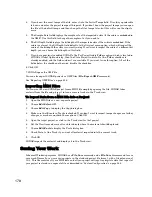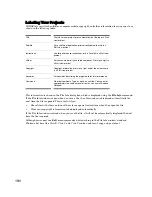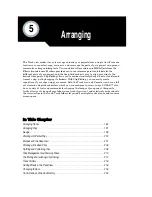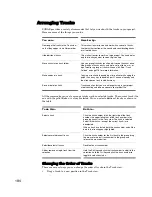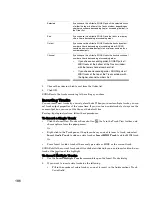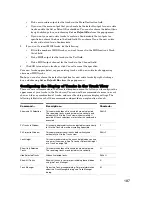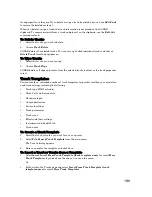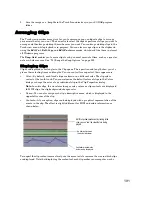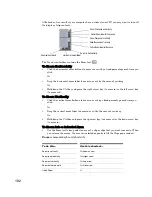
177
Engl
ish
such as Pro Tools, Avid and Logic systems. SONAR also exports projects as OMF files that you can open
in Pro Tools and other audio software.
SONAR now allows you to select sample rate and bit depth during OMF import.
A few general guidelines for preparing OMF files for import into SONAR:
•
OMF version 2 is preferred.
•
AIFC can take slightly longer to open, as the data must be converted to WAVE on read, so WAVE is
the best choice.
•
If exporting from Avid Xpress DV, select "embed" (not "link") when exporting the OMF file, and
don't include any video.
OMF Explained
The OMF format, or OMFI (Open Media Framework Interchange, means the same as OMF), is a file
format that can be read by many professional-level audio programs. OMF files contain two basic types
of information:
•
Audio and/or video files, referred to as media
•
Information needed to put the media data in sequence—known as the Composition
The OMF file supplies the following data and information:
•
Tracks
•
Clip positions—an OMF file's EDL edit resolution can be either frame accurate or sample accurate.
SONAR can read either, but always writes sample accurate. The clip position is specified in
absolute samples.
•
Slip edits
•
Fades and crossfades (as destructive edits)—SONAR renders any fades when it writes OMFs,
creating separate clips for any fade-ins or fade-outs. SONAR slip-edits the original clip to make
room for the fade-in and fade-out clips. If you export to an audio program that supports slip
editing, the user can delete the fade clips and roll out the original clip to return to the original raw
audio (without fades) if desired.
•
Sample rate and audio bit depth, but only if the media are embedded in the OMF
The OMF file does NOT supply the following data and information:
•
Volume and pan envelopes—OMF does actually support limited automation. However, as with
Nuendo and most other OMF host programs, gains and pans are ignored (on both read and write)
in SONAR as they are only supported on MONO tracks (OMF limitation).
•
Plug-in effects.
•
MIDI data
•
Tempo
Whoever supplies the OMF file that you want to open in SONAR should also send along a text file
containing all pertinent information about the project, especially tempo.
To Open OMF Files in SONAR
1.
Use the
File-Open
command, which opens the Open dialog.
2.
In the Files Of Type field, select OMF File.
3.
Navigate to the folder that contains your OMF files, select the OMF file you want to open, and then
click the Open button, which opens the Unpack OMF dialog.
Summary of Contents for Cakewalk SONAR
Page 1: ...Cakewalk SONAR User s Guide ...
Page 2: ......
Page 4: ......
Page 22: ...xxii ...
Page 50: ...50 ...
Page 102: ...102 ...
Page 182: ...182 ...
Page 302: ...302 ...
Page 420: ...420 English ...
Page 466: ...466 ...
Page 502: ...502 ...
Page 574: ...574 ...
Page 580: ...580 ...
Page 608: ...608 ...
















